Newsletter: GL Announces MAPS™ GPRS Gb Interface Emulator
Welcome to another March 2013 issue of GL's Newsletter providing information and insight into our latest MAPS™ GPRS Gb Interface Emulator software.
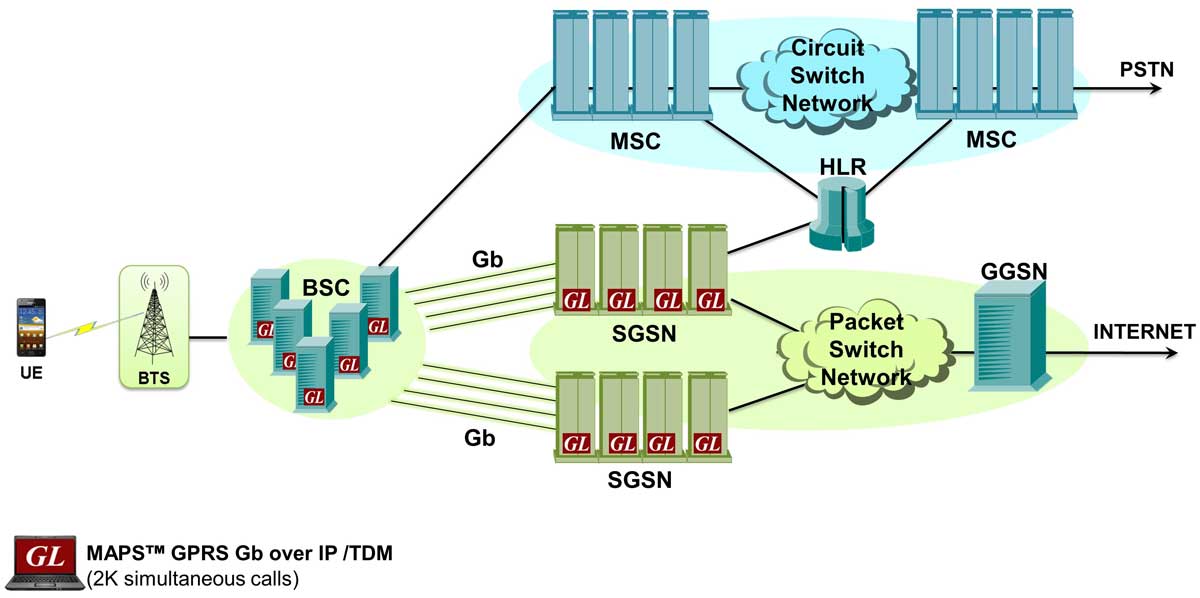
Overview
GPRS, or General Packet Radio Service, was introduced (in the late 90's and early 2000's) to enhance data carrying capabilities of the basic GSM Network. Initially it used the conventional T1 E1 transport and frame relay protocol. As data traffic (IP) has steadily increased, the use of IP interface provides many advantages including increased throughput, capacity, and economy. Also as the wireless infrastructure evolves towards IP, the migration of 2G IP based systems to 3G and 4G is also more efficient and economical.
To permit our customers to emulate, test, and verify GPRS Gb functionality, GL has enhanced its MAPS™ (Message Automation & Protocol Simulation), a multi-protocol, multi-technology platform to emulate GPRS Gb Interface over IP. MAPS™ also supports many other protocol families including TDM, IP, ATM, and Wireless.
MAPS™ is designed to simulate GPRS Gb interface messages and signaling specification as defined by 3GPP standard. MAPS™ GPRS Gb currently supports Gb interface between the BSS (Base Station Subsystem) and the SGSN (Serving GPRS Support Node) over IP transmission protocol. Emulation over Frame Relay transmission protocol will be supported in future.
Besides testing network elements (SGSN and BSS), the tester also involves error tracking, regression testing, and load testing/call generation. MAPS™ GPRS Gb interface Emulator supports various procedures including Network Service Control, Identity Check, Combined GPRS / IMSI Attach, and Routing Area Update. It can run pre-defined test scenarios against the interface test objects in a controlled & deterministic manner.
MAPS™ GPRS Gb Interface Emulator supports powerful utilities like Message Editor, Script Editor, and Profile Editor which allow new scenarios to be created or existing scenarios to be modified as per the protocol standards supported.
Supported Protocol Standards
| Supported Protocols | Specification Used |
|---|---|
| BSSGP | 3GPP TS 08.18 V8.10.0 (2002-05) |
| LLC | 3GPP TS 04.64 V8.7.0 (2001-12) |
| NS (Network Service) | GSM 8.16 (ETSI TS 101 299 V8.0.0) |
| GMM | 3GPP 24.008 |
| SMG (GPRS Session Mgmt) | 3GPP TS 24.008 V5.16.0 (2006-06) (Release 5) |
| SNDCP | 3GPP TS 04.64 V8.7.0 (2001-12) |
Call Generation
Call Generation option allows the user to simulate outgoing communications where an outgoing call is initiated by sending call control messages using proper scripts and profiles. The profile allows necessary parameters of call control messages to be changed during runtime.
The MAPS™ GPRS Gb Interface Emulator simulates various GPRS procedures over IP between the SGSN (Serving GPRS Support Node), and BSC (Base Station Controller) nodes.
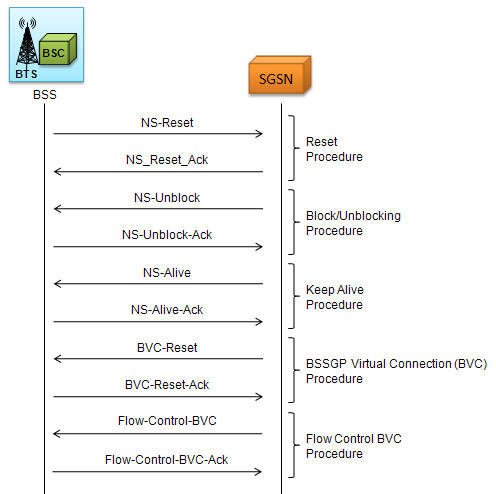
Network Service Control and BSSGP Procedures
The screen shot depicts a scenario where MAPS™ GPRS Gb configured to act as BSC initiates the Network Service Control and BSSGP Procedure by NS-RESET Request to the DUT (SGSN). Also, simulates the complete GPRS session procedure as in the specification (3GPP TS 23.060 V6.11.0 (2005-12)).
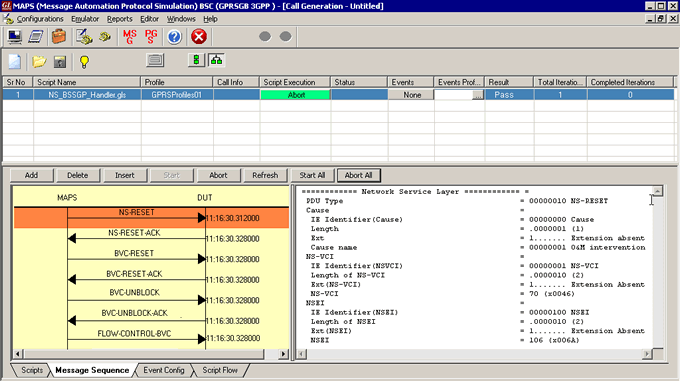
Call Generation (Network Service Control and BSSGP Procedure) at BSC Node
Call Reception
Call generated from other entity can be automatically detected in call reception window by pre-setting the required scripts in the Incoming Call Handler window.
This test is performed to ensure that the MAPS™ GPRS Gb (configured as SGSN) on receipt of NS-RESET request, SGSN acknowledges with an NS-RESET-ACK PDU including the NS-VCI and the NSEI.
Main Features
- Simulates SGSN (Serving GPRS Support Node) and BSS (Base Station Subsystem) elements in GPRS Gb interface over IP
- Simulates Control plane Gb mode
- Generates hundreds of Control Signaling (Load Testing)
- Generates and processes NS (Network Service), BSSGP (Base Station Subsystem GPRS Protocol), and various GPRS session procedure messages
- Supports Gb interface procedures including Network Service Control, Identity Check, Combined GPRS / IMSI Attach, and Routing Area Update
- Insertion of impairments to create invalid messages
- Supports customization of call flows and message templates using Script and Message editors
- Supports scripted call generation and automated call reception
- Script based & protocol independent software architecture
- Provides Call Statistics and Events Status
- Supported on Windows® XP and Windows® 7 (32 bit and 64 bit) OS
Applications
- Complete analysis and simulation capability
- Provides fault insertion, and erroneous call flows testing capability
- Functional testing, Regression testing and Conformance testing of network elements
- Ready scripts makes testing procedure simpler, less time consuming and hence time to market products
- QoS requests for greater or lesser bandwidth
Call Statistics
By default, all call handling scripts (irrespective of the type of the functions) are assessed by MAPS™ to provide statistical information about Total Calls, Active Calls, Completed Calls, Passed Calls, Failed Calls, and Calls/Sec. It is also possible to characterize the statistical information under different groups of call handling scripts under a unique heading. In addition, Call Generation and Call Reception windows provide useful call status & script execution results.
For comprehensive information on the application, you can refer to the MAPS™ GPRS Gb Interface Emulator web page.
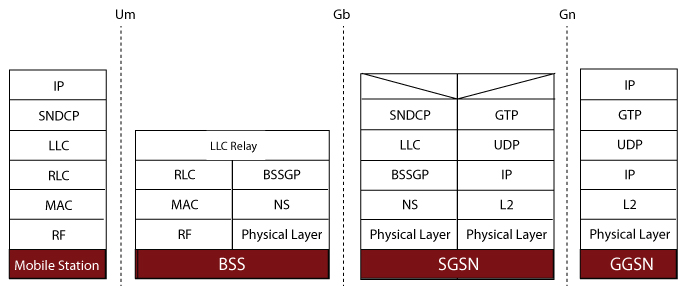
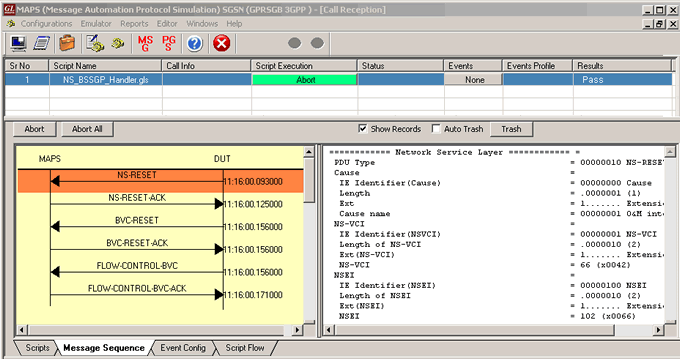
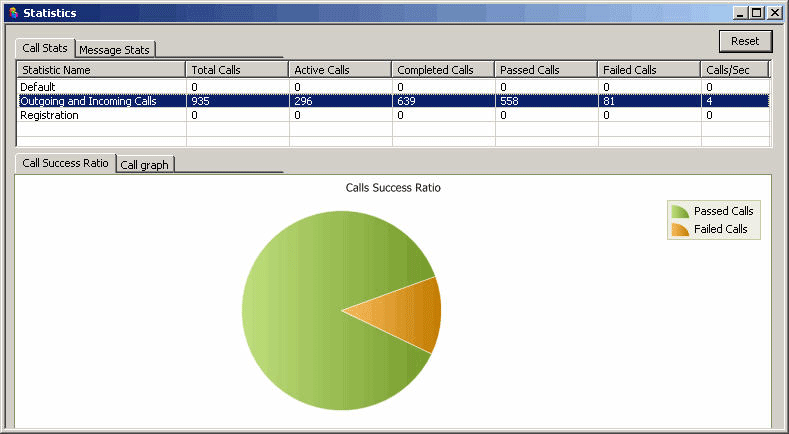
 Back to Latest News Page
Back to Latest News Page